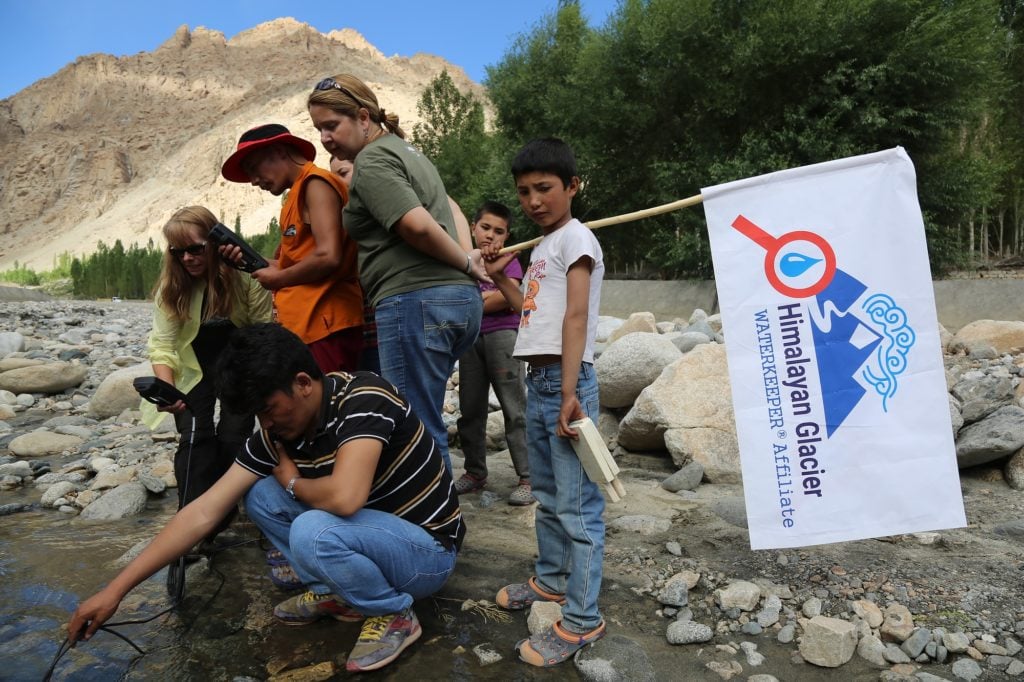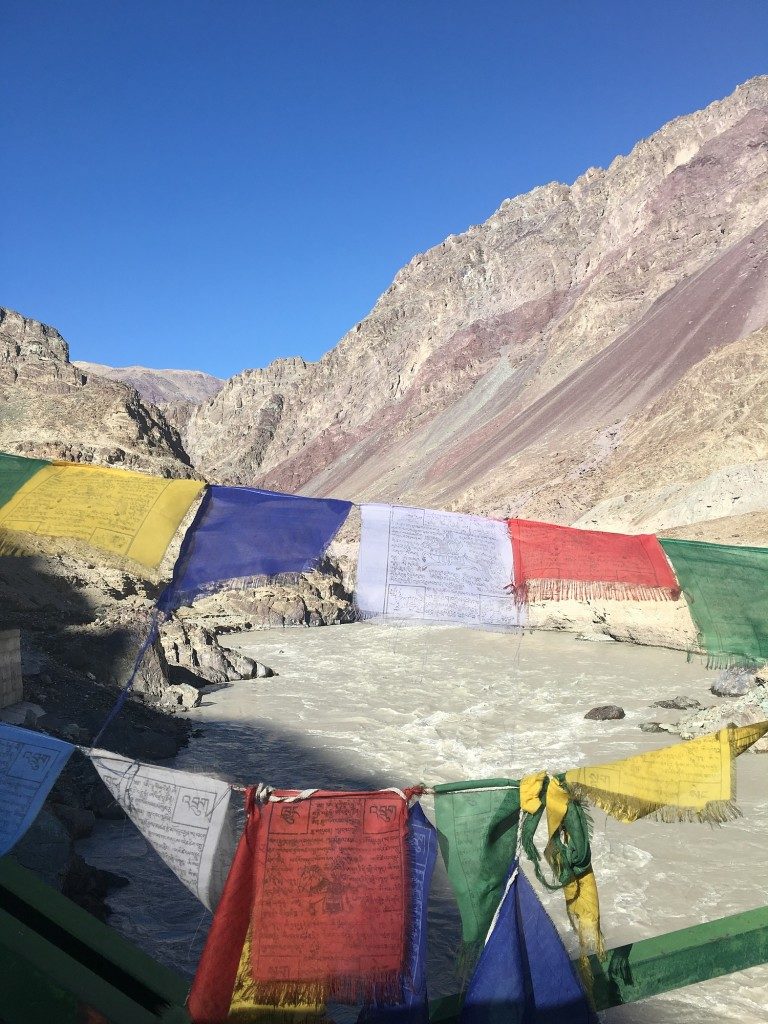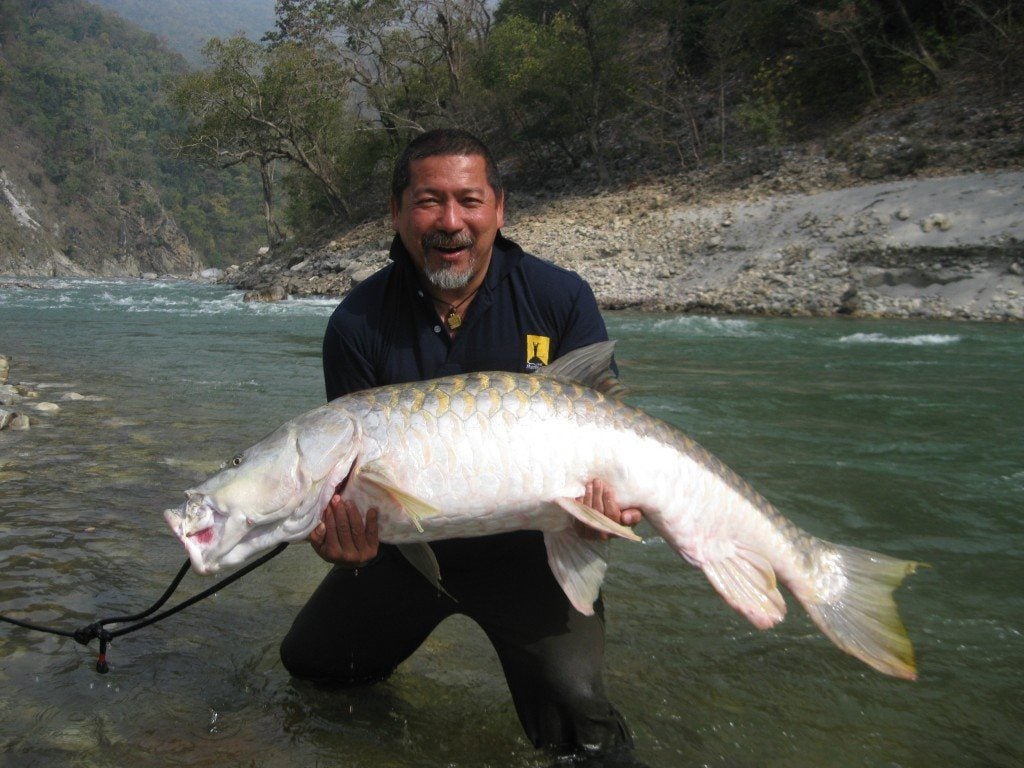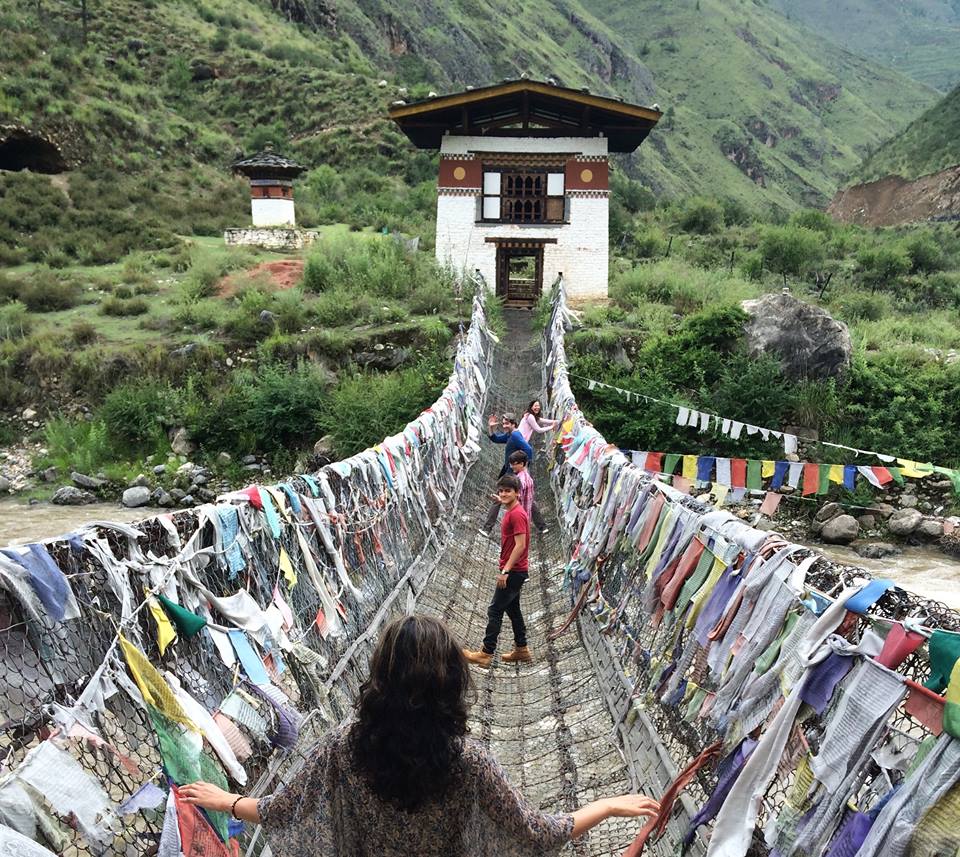Protecting The Himalayas – The Rooftop Of The World
By: Sharon Khan
In the Mighty Himalayas of India, Pakistan, Nepal and Bhutan, Waterkeeper organizations, governments and other non-governmental organizations are cooperating to protect fresh water for half the world’s population.
Co-written by Sharon Khan, Marc Yaggi, and Megh Bahadur Ale

The Himalayan Glaciers, which stretch east from northern Afghanistan, Pakistan, and India, through Nepal and Bhutan, and into the neighboring Tibetan Plateau and China, are the source of fresh water for nearly four billion people in Asia. The melting of snow in the Arctic and Antarctic due to global warming is reported frequently, but the melting of the Himalayas’ glaciers has gone largely unreported, even though far more people are affected. The glaciers of the Himalayas are, in fact, “the Third Pole.” They feed the giant rivers of Asia that support half of humanity.
Three major rivers – the Indus, the Ganges and the Brahmaputra – arise in the Himalayas and flow directly into Pakistan, India and Bangladesh. The Yellow, Yangtze, Mekong, Irrawaddy and Salween Rivers arise from the Tibetan Plateau and flow directly into China before continuing into Myanmar, Laos, Thailand, Cambodia, and Vietnam.
These rivers are the source of water for drinking, washing, irrigation, fishing and industry, and have also been the source of many local and international disputes about their quality and flow from one community into another, within and across borders. But 52 Waterkeepers in these communities do not recognize borders when they apply their passion and commitment to the health of river ecosystems.
In January 2016, Waterkeeper Alliance launched an initiative to protect the Himalayan waters and its growing network in India, Nepal, and Bhutan, and work with Waterkeepers throughout the region – and across the globe – to protect the “The Third Pole.”
This article highlights the challenges facing new Waterkeepers and the solutions they are developing in three parts of the Himalayas.
Ladakh, India
“Do not dirty the sacred rooftop of the world” – His Holiness the Gyalwang Drukpa

High up on “the sacred rooftop of the world,” on the Indus River in the Ladakh region of India, Himalayan Glacier Waterkeeper was founded in 2013 by His Holiness the 12th Gyalwang Drukpa, head of the Drukpa lineage of Buddhism, who has over 27 million followers around the world. He is an award-winning humanitarian and environmentalist who advocates respect for nature as one of the steps on the path to enlightenment. He was the recipient of the 2010 United Nations Millennium Development Goals Award for his cross-border humanitarian work and India’s 2010 Green Hero Award for his work in sustainable development.
In September 2013, His Holiness visited Waterkeeper Alliance staff in New York while in the city for high-level meetings at the U.N. and at a convening of the Global Clinton Initiative. At our humble Battery Place office overlooking Lady Liberty, we discussed developing a Waterkeeper organization in the Himalayas. Two months later, Himalayan Glacier Waterkeeper, based in Leh, Ladakh, joined our ranks.
Padma Tashi, leader of the Young Drukpa Association, a non-government organization formed to draw youth into environmental conservation, is the Himalayan Glacier Waterkeeper. His reputation and influence throughout Ladakh has helped him to build a network of 20 Himalayan Glacier affiliates to protect the vast system of rivers, streams and tributaries that feed into the Indus and Zanskar Rivers in Ladakh.
The Indus and its tributaries, fed by glacial-melt waters, sustain communities throughout Jammu and Kashmir, a single state that contains Ladakh and that is a locus of dispute involving India, Pakistan and China. The headwaters of the Indus originate in the plateaus of Tibet and run through India and Pakistan to the Arabian Sea near the port city of Karachi. Along its way, its river-systems support temperate forests, plains, arid countryside and countless communities.
The natural habitat and the way of life of Himalayans are seriously affected by the forces of modernization and climate-change, as was recently discussed in the English newspaper The Guardian. In Ladakh, although increased tourism and new roads have facilitated distribution of goods, there is virtually no awareness of the dangers of plastic litter in the wild. There are no means of disposing of this waste, which is migrating into the region’s rivers, its primary source of drinking-water. In addition, the rapid melting of glaciers caused by warmer weather is contributing to the drying up of springs and rivers used for drinking-water.
Ladakh, at an altitude of 9,800 feet, also has been facing extreme-weather, including rare and catastrophic flash floods, made worse by rapid deforestation that has removed nature’s flood-defense mechanisms. In August 2010, flash floods in Ladakh damaged over 71 towns and villages, and claimed 225 lives. And floods in September 2014 killed more than 550 people in the Kashmir region and devastated the lives and livelihoods of survivors. These incidences, which are expected to become more common, have been termed “Himalayan tsunamis.”
Less disturbing but also very significant is the threat of such events to Ladakh’s spiritual and cultural heritage. Its nearly 1,000-year-old Hemis Monastery of the Drukpa Lineage houses its largest collection of Buddhist relics, rare murals and texts, many of which define the sacred and sophisticated administration of traditional water rights.
Nepal
Saving Himalayan Rivers in Nepal with Megh Bahadur Ale

Six thousand rivers and tributaries flow through the majestic Himalayas to the lowlands of the Terai in Nepal, enriching the country’s river-basins and valleys, providing fertile land for 85 percent of its people who depend on agriculture for subsistence, delivering drinking-water to millions of other Nepalis and supplying over 70 percent of the annual flow of the Ganges River in India.
There are currently two Waterkeepers in Nepal, the first on the Bagmati River, which flows through the capital city of Kathmandu and once provided clean water for most of its residents; the other on the Karnali River, one of the country’s last remaining freeflowing rivers – and a world-class whitewater-rafting site. Both organizations were founded by Nepal Rivers Conservation Trust, an association of river-guides and conservationists working on major river-systems throughout the country.
A world-famous destination for trekkers from around the world, including those heading for Mount Everest, Kathmandu’s population has exploded to over 1.5 million. People flocking to the city looking for work have settled in dense slums that have pressed closer and closer to the banks of the Bagmati and, enabled by poor river management, turned it into a dumpsite and open sewer. Even residents of other areas with better options for waste-disposal, deposit trash and waste into the rivers. Although legislation exists to protect these rivers, there are no mechanisms for monitoring and cleaning them, or for providing riverbank communities with appropriate alternatives for waste-disposal.
Bagmati River Waterkeeper and Nepal Rivers Conservation Trust (NRCT), founded and led by Megh Ale, have been participating in a “Clean Bagmati Campaign” that is becoming tremendously successful. Since 2013, between 2000 and 5000 citizens have gathered every Saturday morning to clear the river of trash. Where once one could walk across a river solid with waste, it now flows free – albeit black and toxic. As the campaign has been featured in news articles and television programs, the Department of Environment has shut down some pollution sources, and the Integrated Development of Bagmati Civilization, a government agency, has started a comprehensive action plan to restore Kathmandu’s river.
Dams are a pressing issue in Nepal. The government and multinational corporations are building and planning dam projects for almost all of the country’s rivers, including the Karnali. Although dams can provide clean energy for the people, they sometimes make none of that energy available to those who live on the river’s banks, and they can displace residents, destroy ecosystems and reduce a river’s existing economic productivity. Megh lobbies for a policy to dam only where environmental and economic impact would be small. His vision is supported by a UN report released in March 2016 that classified small but not large dams as generators of renewable energy.
Some Nepali laws – the Water Resources Act, Environment Protection Act, National Wetlands Policy Irrigation Policy, Hydropower Development Policy, and the Drinking Water Regulation – refer somewhat to rivers, but the country has no legislation that specifically addresses river-management. So there has been a strong need for a forum and strategy to address disputes over their ownership and use. In September 2014, NRCT organized a summit where stakeholders could prepare a basis for a national river-policy. It yielded a 15-point declaration proposing water-and-river-conservation practices that would ensure economic growth, social equity and ecological balance, informed by science and involving community participation. This declaration, in effect, forms the foundation for the actions of the growing network of Waterkeepers in Nepal.
Bagmati River Waterkeeper successfully concluded its first scientific expedition on April 24, 2015, with great success, results and reasons to celebrate. Then, on April 25th, a 7.8 magnitude earthquake devastated Nepal and caused more than 8,000 deaths, including some family-members and friends of the Waterkeeper team. The Bagmati River Waterkeeper and NRCT have spent much of the past year helping to rebuild the country, and the recovering Nepal has a new Waterkeeper on the Karnali River, which will host the next scientific expedition this fall.
Bhutan

Bhutan is a small Himalayan kingdom east of Nepal, north of India and southwest of China. It contains the least impacted rivers in the Himalayan region. It is roughly 75 percent forested, and its constitution requires that it remain at least 60 percent so. These conditions have allowed the country to be one of the few in the world that acts as a carbon sink – that beneficially absorbs more carbon than it releases. Prime Minister Tshering Tobgay promises that Bhutan will remain carbon neutral – while it is in fact, carbon negative. Bhutans strong conservation ethic was established by King Jigme Singye Wangchuck, who reigned until 2006, and has been carried forward by his son, King Jigme Khesar Namgyel Wangchuck, the prime minister and the Buddhist leadership. “Where we live,” the current king has declared, “must be clean, safe, organized and beautiful, for national integrity, national pride, and for our bright future. This too is nation-building.”
Bhutan’s main economic generator is hydroelectricity, 75 percent of which is exported to India. But as climate-change advances, more caution is required in dam building. A 2012 UN report on glacial-lake outburst-floods noted that the country’s 677 glaciers and 2,794 glacial lakes had experienced more than 21 glacial lake outburst floods in the last forty years. It also identified another 25 glacial lakes as potentially dangerous – ticking time bombs whose outbursts could have devastating impacts on dams downstream.
Bhutan, long closed to the outside world, opened its doors to tourism in 1974, and is now rapidly modernizing. As imports of packaged foods and other commodities have increased, so have littering and unsustainable practices such as dumping and burning of waste, including plastics, combustion of which releases toxic fumes. Waterways are becoming polluted, especially in the capital city, Thimphu. A recent letter to the editor of Kuensel, the national newspaper, lamented the lack of proper controls of erosion and sediment on road-construction projects. And, though automobiles remain fairly scarce in Bhutan, their growing number has brought more repair-shops, which discharge waste-oil and other pollutants directly into the city’s Olarongchu River, tributary of the Thim Chu.
As in Nepal, several acts and plans have been established to address waste-management in Bhutan, including the National Environmental Protection Act and the National Strategy and Action Plan: Integrated Solid Waste Management in 2007, the 2009 Waste Prevention and Management Act, and the 2014 National Integrated Solid Waste Management Strategy. Unfortunately, implementation of these plans does not appear to have reached beyond Thimphu.
The Ministry of Health, which administers parts of the 2011 Water Act, has begun to focus more on water quality. It oversees a modest hospital-based aquatic laboratory, but it severely lacks equipment and training for monitoring and analyzing all the pollutants that are caused by rapid development.
Nedup Tshering, a charismatic leader who inspires citizens and leaders across the country, is the founder and executive director of Clean Bhutan, an NGO with a mission to achieve a “zero-waste Bhutan” by 2030. It was established in February 2014 in celebration of the 60th birthday of the previous king, who conceived the “Gross National Happiness Index,” by which welfare is measured by good health, environmental preservation, clean air, clean water and other factors. Clean Bhutan advocates behavioral change and awareness of its programs. In September 2015, Clean Bhutan welcomed Thim Chu Waterkeeper to Thimphu.
Last November, Waterkeeper Alliance staff traveled to Bhutan with a team of scientists from Stroud Water Research Center of Avondale, Pennsylvania to conduct physical, chemical and biological assessments of water quality in three Bhutanese rivers, the Thim Chu, Paro Chu, and Punakha Chu, and various streams. Working alongside Thim Chu Waterkeeper and partners from the National Environment Commission and the HydroMet Division of the Ministry of Economic Affairs, they installed the country’s first three real-time water-quality monitoring sensors.
Conclusion
Protecting the Himalayan glaciers and rivers and the countless communities that depend on them is a colossal challenge, but the Waterkeepers in the Himalayas are optimistic. They are dedicated to strengthening community efforts to monitor the quality of their waterways and inform themselves to advocate for the abundance and purity of freshwater that sustains nearly half the world’s population.